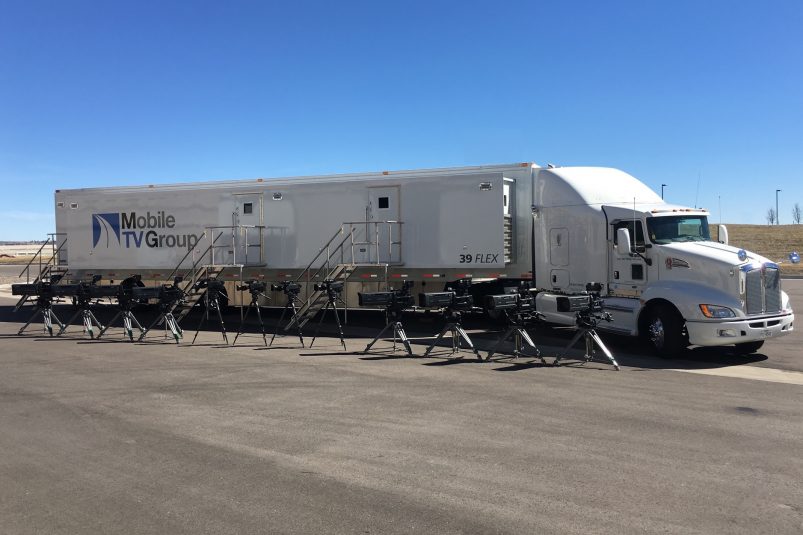NBA Fans in U.S. Finally Get 4K Fix; Unified HD/4K Production a Reality for Mobile TV Group
Story Highlights
The NBA in 4K has finally arrived in the U.S. NBA TV and DirecTV delivered UHD coverage of two games, one on Nov. 22 and then on Dec. 3 game to viewers, with Altitude Sports and Mobile TV Group producing both the HD and 4K feed out of one truck.
The shoot involved eight 4K Sony cameras and a total of 22 resources (the other 14 POV and handheld cameras were all upconverted to 4K) that were ultimately produced in Mobile TV Group’s 39 FLEX production unit.
“These regional NBA games are not small,” says Phil Garvin, president/co-founder, Mobile TV Group. “There is a lot of complexity and elements that require double and triple boxes with heavy keying. So we took this on to see if we could have HD for the in-market coverage and 4K for the out-of-market coverage.”
The biggest barrier to a unified production has been how 4K limits the capabilities of the production switcher and the reliance on square division (also known as quad HD) for 4K-signal transport.
Garvin notes that the engineers had their challenges working in 4K but it was more manageable than they had thought it would be.
“At first, they looked at me like, Are you sure you want to do this?” he says, “but they did a fantastic job and worked really hard and with a lot of unknowns.”
A key enabler, he explains, was a software upgrade to the Grass Valley Kayenne K-frame production switcher, allowing the technical director to load in the HD show and make it ready for 4K with only a few tweaks.
“Kudos to Grass Valley,” says Garvin, adding, “They had a couple of people onsite to help us get through the show.”
Another key technical enabler was the use of two-sample interleave (also known as 2SI) instead of the square-division method to transport the 4K signals. The latter splits the 4K image into four 1080p quadrants for transport via four HD-SDI signals at 3 Gbps. Those four signals then need to be aligned to create the 4K image.
But 2SI works by sending a full image at one-quarter of the resolution, offering the advantage of being able to be monitored easily on standard 1080p displays. Also, if one of the four signals is impaired or lost, resolution is reduced instead of a quadrant of the screen’s going dark.
“With 2SI, we could have three full-blown keyers per mix effect,” Garvin says, “something we could not have with square division.”
The EVS replay servers operated in 1080i mode, but he says they looked fine, especially if the image was captured at a high frame rate. “In those cases, the upconvert to 4K looked really good.”
The big takeaway for Garvin is that he now sees no reason to view 1080p as a stepping stone.
“The challenge of producing 4K and HD in a single production has been resolved,” he says. “Can you do the Super Bowl that way? No. But you should be able to do it within a year with no limitations other than there won’t be a truck that can do it. But there will be no technical limitations.”

